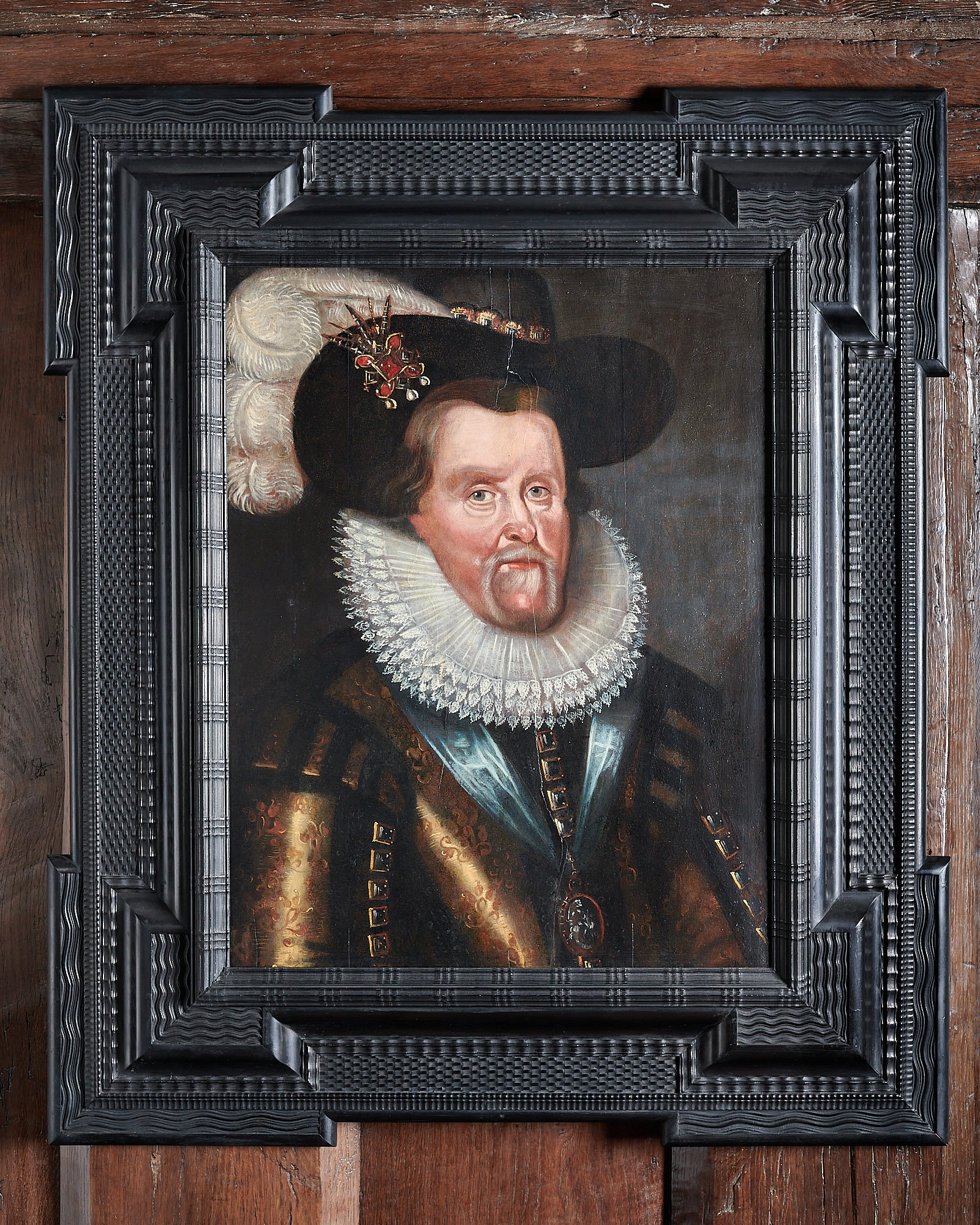Portrait of James I
1603 - 1625
Scotland
W 20" (Frame 33 1/2") × H 26" (Frame 39 1/2")
Stock # Marh2140
£12,000.00
This head and shoulders portrait depicts King James I of England, and VI of Scotland (1566-1625), oil on pine panel, is believed to have come from the collection of Sir Walter Scott, the Scottish novelist. This particular depiction of the king is a reduced version from the late likeness painted by the Flemish artist Paul van Somer (1577-1621), which is a full-length portrait dated 1618, in the Royal Collection. Artists were known to have used this face pattern and it has been interpreted in various forms throughout this artistic period of Britain. Figure 2 offers another artist’s interpretation of this particular face pattern, dated c.1620 and in the Royal Collection. Some visual similarities lie in the positioning of the king’s body, along with the elaborate attire of a gold and brown silk doublet with an intricately layered lace ruff and the garter ribbon.
When James ascended the throne in 1603 following the death of Queen Elizabeth I (1533-1603), he became the first monarch of the Stuart dynasty in England. At this point in his life he was also married to Anne of Denmark and had 3 children, Henry Prince of Wales, Charles I and the ‘Winter Queen’ Elizabeth of Bohemia.
Soon after becoming King of England, James faced an abundance of complications at court, including the issues of foreign policy with the war in Europe exceeding, and whilst religious and parliamentary tensions led to a feeling of hesitance prior to his accession. James had also inherited a great amount of debt, and though his income was more than what he had before in Scotland, his spendings were also increasing. A lot of his money went towards the visual splendour of his accession to the throne, including that of jewels and works of art. The commission of portraiture for the king was an important way to reinforce his claim to the throne, as we see in the strong influence that was held by Paul van Somer and the multitude of portraiture based upon this type throughout England and Scotland.
The extravagant lifestyle of the English court was also known to have been preferred by James, for he only ever visited Scotland once more after his accession in 1617. One of his main ambitions was to fully unite both Scotland and England, though he was unsuccessful in that when he moved south, Scotland kept their own parliament, established church and legal and educational systems.
Though his factions in politics and foreign policy may have proved to be difficult during his reign, he acquired success in the literary sector, as he was well-read, had an extensive library collection and scholarship was known to be at the heart of his reign. James wrote the Basilikon Doron (Royal Gift), also known as the doctrine of the Divine Right of Kings and explained the role of a king having been chosen by God to hold the throne. Another success was his commission for the new translation of the Bible, which was published in 1611 and also known as the Authorised Version (‘King James Bible’).

